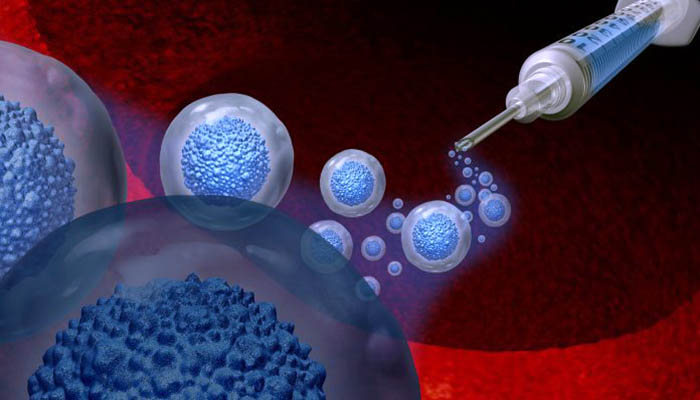Scientists eye stem cell transplant as a possible cure for the Human Immunodeficiency Virus [HIV]. A new study shows that a stem cell transplant could be the possible cure for HIV as a woman who received the treatment is still virus-free more than five years after the procedure and 30 months after she stopped taking HIV medication.
Bryson and her colleagues published preliminary data on the New York patient in February 2022. They expanded on the case in the journal Cell on Thursday (March 16).
The new research covers the majority of the patient’s condition. This is up to the point where she stopped taking antiretroviral therapy (ART), the standard HIV treatment, for about 18 months.
The patient underwent a stem cell transplant in August 2017 and discontinued ART a little more than three years later. She’s been off the drug for almost 2.5 years now, and “right now, she’s still doing very well, enjoying her life,” said Dr. Jingmei Hsu, director of the Cellular Therapy Laboratory at NYU Langone Health and one of the transplant team leads, at a news conference.
Previous HIV cure instances, including definitive cures in men treated in London, Berlin, and Düsseldorf, as well as one case of long-term remission in a man treated in Los Angeles, had received stem cell transplants from bone marrow as a dual treatment for both cancer and HIV. (The first HIV-cured patient, a man from Berlin, died in 2020 due to a cancer relapse.)
All of these transplants used bone marrow stem cells from adults. These adults had two copies of an uncommon genetic mutation called CCR5 delta 32. This mutation changes the gateway via which HIV normally enters white blood cells, preventing the virus from entering.
What Comes After The Stem Cell Transplant
Upon transplantation, the donor stem cells take over the patient’s immune system, replacing old, HIV-vulnerable cells with new, HIV-resistant ones. To make room for the new immune cells, doctors use chemotherapy or radiation therapy. This is to eliminate the original immune cell population.
The New York patient, like earlier cases, had both cancer and HIV and underwent chemotherapy prior to her transplant. She did, however, receive stem cells derived from umbilical cord blood that included HIV-resistance genes.
The umbilical cord blood was supplied by the parents of an unrelated baby at the time of delivery. It was later tested for the CCR5 delta 32 mutation. Because umbilical cord stem cells were limited in number, the patient also received stem cells donated by a relative, which aided bridge the gap when her HIV-resistant cells began to arrive.
Because umbilical cord blood is easier to get than adult bone marrow and may be “matched” more easily between donors and recipients, such operations may become more widespread in the future.
Is Stem Cell Transplantation Ideal?
According to Bryson, stem cell transplants would not be ideal for HIV-positive people who do not have a second major disease, such as cancer, because they require wiping out the immune system.
Things to Keep in Mind
HIV is a virus that affects the immune system, primarily CD4 cells (also known as T cells). These cells are important for battling infections and illnesses. Contact with infected bodily fluids such as blood, sperm, vaginal secretions, and breast milk transmits HIV.
If HIV is not treated, it can lead to AIDS (Acquired Immunodeficiency Syndrome). This is a condition in which the immune system is severely impaired. Consequently, it makes the body susceptible to opportunistic infections and malignancies.
There have been some other hopeful advances in HIV research toward finding a cure, including:
[1] Gene Editing: Using gene-editing techniques such as CRISPR-Cas9, scientists were able to delete HIV DNA from infected cells. Although this method is still in its early stages, it shows promise as a potential HIV treatment.
[2] Long-Acting Antiretroviral Treatment (ART): ART is the most effective HIV treatment currently available, although it needs daily medication. In clinical studies, long-acting ART formulations that can be delivered less frequently (e.g., once every six months) are being developed and tested.
[3] Broadly Neutralizing Antibodies (bNAbs): These antibodies are capable of neutralizing multiple strains of HIV. For several years, researchers have been working on producing bNAbs, and recent studies have indicated that they can be successful in inhibiting the virus in animal models.
[4] Therapeutic Vaccines: Scientists are working on therapeutic vaccines that can boost the immune system and control HIV infection without the need for regular medication.
Preventive Measures for HIV
Many precautions can be taken to avoid HIV transmission. Here are a few of the most powerful:
[1] Practice safe sex: To limit the risk of HIV transmission, use condoms or other barrier techniques during intercourse.
[2] Use pre-exposure prophylaxis (PrEP). PrEP is a medicine that reduces the risk of HIV transmission. This is for those who are at high risk of catching the infection.
[3] Be tested: Understanding your HIV status is critical for both you and others. Test yourself on a frequent basis and encourage your partner(s) to do the same.
[4] Always use clean needles: If you inject drugs, always use clean needles and never share needles or injection equipment.
[5] Start treatment as soon as possible: If you have HIV, starting antiretroviral therapy (ART) as soon as possible will help lower the risk of spreading the infection to others.
[6] Use universal precautions: Health practitioners and others who may come into contact with blood or body fluids should use universal precautions such as gloves and other protective gear.
[7] Educate yourself and others: study HIV and how it spreads. Also, share your knowledge with others to help eliminate stigma and encourage prevention.
How To Care For A HIV Positive Person
Caring for someone living with HIV necessitates compassion, empathy, and a commitment to their physical and mental well-being. Here are some pointers on how to care for someone who has HIV:
[1] Support and assist them in sticking to their treatment plan: Antiretroviral therapy (ART) can effectively manage HIV, but it requires rigorous adherence to a pharmaceutical regimen. Encourage the individual to take their medications as directed and assist them in developing coping techniques.
[2] Provide emotional support: Being diagnosed with HIV can be emotionally difficult, and the person may want assistance in coping with the diagnosis and managing their mental health. Provide a listening ear, acknowledge their sentiments, and urge them to seek professional help if necessary.
[3] Encourage healthy lifestyle choices: A nutritious diet, frequent exercise, and abstaining from alcohol and drugs can all contribute to general health and well-being. Encourage the individual to make healthy choices and provide assistance in building a healthy lifestyle.
[4] Urge the person to practice safe sex in order to prevent transmission to others and offer assistance in locating resources for safe sex practices.
Read More:
- Scientists Explore New Way to Get Rid of Cluster Headaches
- Reduce the Risk of Type 2 Diabetes, Study Reveals
- Scientists Discover New Laser Drug Against Primary Bone Cancer



